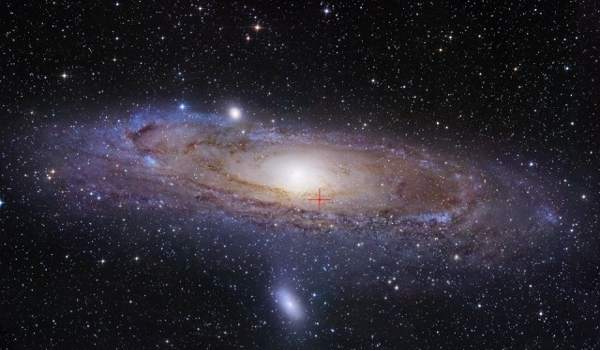Astrophysicists have developed a new method for locating extremely rare extragalactic objects. They hope that their method for detecting ‘changing-look quasars’ will bring scientists one step closer to solving one of the universe’s greatest mysteries: how supermassive black holes grow. Quasars are thought to be in charge of regulating the growth of supermassive black holes and the galaxies that host them.
Astrophysicists at the University of Bath have developed a new method for locating extremely rare extragalactic objects. They hope that their method for detecting ‘changing-look quasars’ will bring scientists one step closer to solving one of the universe’s greatest mysteries: how supermassive black holes grow. Quasars are thought to be in charge of regulating the growth of supermassive black holes and the galaxies that host them.
A quasar is a region of spectacular luminosity at the center of a galaxy powered by a supermassive black hole – the largest type of black hole, with a mass millions or billions of times that of our sun. There is a supermassive black hole at the centre of the Milky Way.
Astrophysicists have developed a new method for pinpointing the whereabouts of extremely rare extragalactic objects. Quasars are believed to be responsible for regulating the growth of supermassive black holes and their host galaxies.
Changing-look Scientists are still puzzled as to why quasars rapidly switch between high and low luminosity states. When the brightness is reduced, a quasar becomes too faint to be seen against the backdrop of the host galaxy, making it difficult for space scientists to locate it or the supermassive black hole to which it is linked.
The new detection method will allow researchers to find quasars that are undergoing extreme luminosity changes, allowing them to create a more comprehensive census of supermassive blackholes. The next step will be to investigate the causes of the luminosity switches, which will allow scientists to gain a better understanding of how supermassive black holes form. As the energy output from supermassive black holes can affect the fate of galaxies, clues about the chain of events that give rise to the growth of galaxies are likely to emerge.
Astrophysicist Dr Carolin Villforth, who was involved in the research, said: “These quasars and supermassive blackholes are extremely important for galaxy evolution — the more we learn about them, the more we understand how they influence the growth of galaxies.”

WHAT EXACTLY ARE QUASARS?
Quasars are the universe’s most luminous and persistent sources of light. Many galaxies, including our own, are thought to have one, with astrophysicists identifying over a million in total.
When gaseous matter is drawn by gravitational forces towards a supermassive black hole, quasars form. As this gas approaches the black hole, it forms an accretion disk that orbits it. The disk’s energy is released in the form of electromagnetic radiation, and it is this radiation that causes the quasar’s luminosity.
A thick, dusty donut surrounds the accretion disk, obscuring much of the quasar’s emission. Because the dusty structure is so large, the level of obscuration should not change on human timescales; however, a changing-look quasar may appear to switch from bright to dark quickly (within a human year), which would be extremely surprising if true. Creating a more comprehensive list of quasars with changing appearances would be a significant step toward understanding the causes of these apparent transitions.
Previous attempts to identify changing-look quasars relied on variability across a wide range of wavelengths – a technique known as photometric variability, which has been shown to miss lower luminosity quasars. The Bath researchers used spectroscopic data to assess changes in very small wavelength ranges, allowing them to identify changing-look quasars that photometric searches had missed. They discovered four changing-look quasars millions of lightyears from Earth using this technique. Photometric searches did not pick up on any of the four. Previously, only two of these quasars had been identified in the same area.
Bart Potts, a former MPhys student at Bath who led the research, explained: “We used an older dataset and our new method to see if we could find any new changing quasars that others had missed. This provided us with a larger set of changing-look quasars to study further, as well as validation that our methodology was more sensitive than others, which was fantastic. It demonstrates that our methodology is more sensitive to low luminosity.”
He continued, saying: “Finally, this discovery will benefit the academic community that studies quasars. It will aid others in their investigation into why this particular type of quasar undergoes luminosity switches. We are assisting our community in locating critical answers to big questions.”















